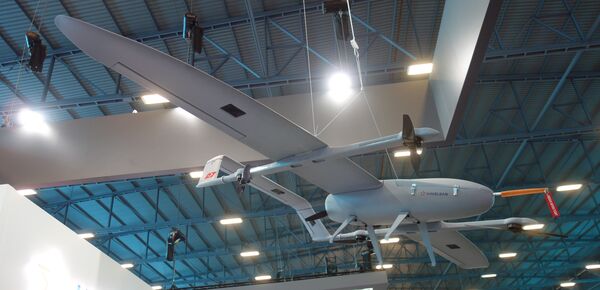
The Baha UAV developed by Turkey's Havelsan on show at AAD 2022. (Janes/Akshara Parakala)
Turkey's Havelsan exhibited its latest iteration of indigenously developed fixed-wing vertical take-off and landing (VTOL) swarm-capable autonomous Baha unmanned aerial vehicle (UAV) at the Africa Aerospace and Defence (AAD) 2022 expo, held from 21 to 25 September, in South Africa.
The Baha is a small UAV developed to conduct intelligence, surveillance, and reconnaissance (ISR) missions with the ability to perform as an independent platform and in alliance with other manned and unmanned air and ground assets. The latest design of Baha includes a boom-mounted T-tail instead of earlier exercised boom-mounted inverted V-tail. The air vehicle (AV) has also undergone modifications to include anti-jamming systems and integration with combat management system and control station for land and naval operations.
The AV has a wingspan of 3.7 m, fitted with four electrically powered rotors (two on each wing), which enables VTOL operations. The forward flight, which is initially propelled by a gasoline engine, can now be propelled by an electric engine. The endurance achieved by the electric engine is two hours against the six-hour endurance achieved through the gasoline engine.
The AV built using carbon-fibre reinforced plastics has a maximum take-off weight of 30 kg, payload capacity of 5 kg, cruising speed of 90 km/h, and operational range and altitude of 80 km and 10,000 ft, respectively. The AV has wind resistance of up to 20 kt.
The UAV can be configured with a variety of payloads such as light detection and ranging (LIDAR), laser rangefinder, and electro-optic/infrared (EO/IR) sensors. The onboard mission computer, telemetry link redundancy, ability to integrate with various mission-oriented sensors, and obstacle-avoidance capability enables the AV to perform swarm-capable missions.
Looking to read the full article?
Gain unlimited access to Janes news and more...







